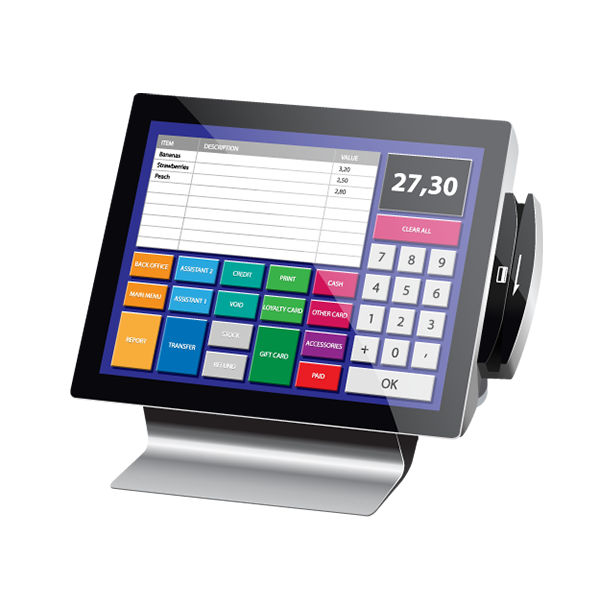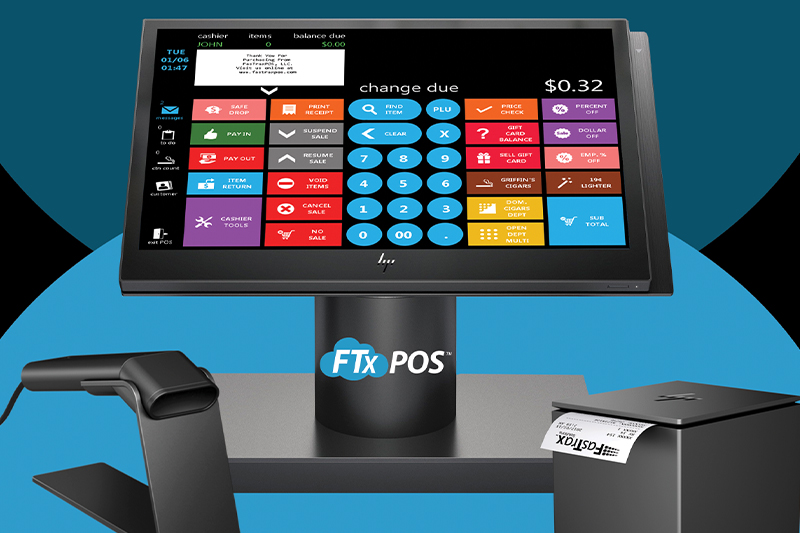Easy to Use POS System: A Sales Management Option Designed To Simplify Transactions For Small Enterprises
Features and Advantages
When diving into the world of a Point Of Sales System for small company, it's not just about sounding up sales. What really sets these systems apart is the abundant tapestry of features woven into their design, each crafted to elevate the day-to-day grind of a small company owner. Imagine a tool that not only tracks sales but likewise reads the pulse of your stock like an experienced detective. Intriguing, best?
Core Functions That Transform Daily Operations
- Stock Management: Gone are the days of frantic stock checks. Modern POS systems automatically upgrade your inventory, signaling you when items run low. It's as if your system whispers, "Hey, time to reorder!" before you even recognize it.
- Sales Reporting: Numbers can be complicated, but a great POS system provides sales data in clear, digestible formats. Charts, graphs, and real-time control panels make it easy to find patterns and make notified choices.
- Worker Management: Arranging shifts and tracking hours end up being smooth. This function not only conserves time but reduces human error, a continuous thorn in the side of little company owners managing numerous hats.
- Consumer Relationship Management (CRM): Picture understanding your customers along with your buddies. POS systems can store client preferences and purchase history, allowing personalized marketing that feels authentic, not forced.
Advantages That Talk To the Heart of Small Company Needs
Why do these features matter? Due to the fact that behind every deal is a story, and a well-designed POS system assists you inform it better. It's not almost performance; it's about empowering you to concentrate on what truly matters-- your customers and growth.
| Function | Benefit | Impact on Organization |
|---|---|---|
| Real-time Stock Updates | Avoids stockouts and overstocking | Improves money flow and customer fulfillment |
| Detailed Sales Analytics | Determines very popular products and peak hours | Notifies marketing and staffing techniques |
| Integrated Payment Processing | Accelerate checkout and minimizes errors | Improves customer experience and builds trust |
| Client Data Management | Makes it possible for targeted promos and commitment programs | Enhances repeat service and customer retention |
Ever Wondered How This Plays Out in Reality?
Image a charming cafe owner, juggling orders throughout a morning rush. The POS system not just processes payments promptly however notifies her to a decreasing supply of her signature beans. She reorders flawlessly, preventing a consumer disappointment. Small moments like this, powered by clever innovation, end up being the unrecognized heroes of business success.
Could your little company prosper with a tool that feels more like a partner than simply a machine? The ideal Point Of Sales System doesn't just manage transactions-- it tells the story of your service, unlocking possible concealed in everyday information.
Checking out the Kinds Of Point Of Sales Systems for Small company
Picture walking into a dynamic café, the barista balancing orders while the register sings the song of smooth deals. Behind that consistency lies the choice of a POS system, customized to fit the rhythm of business. But what sort of systems genuinely empower small companies to thrive? Let's dissect the landscape.
1. Conventional POS Systems
These are the tough old-timers, typically hardware-heavy and in your area set up. They boast robust performance however sometimes seem like carrying a typewriter into the digital age. While they offer reliability, their rigidness can trip up companies craving dexterity and remote gain access to.
- Pros: Fast processing, offline capability, extensive inventory management.
- Cons: Initial hardware investment, restricted flexibility for scaling or mobility.
2. Cloud-Based POS Systems
Consider these as the active acrobats of the POS world. Cloud-based systems run via web, allowing business owners to handle sales and stock from essentially anywhere. This liberty, nevertheless, dances in tandem with reliance on steady web connections-- a double-edged sword for some.
- Benefits: Real-time updates, scalability, combination with several gadgets.
- Downsides: Vulnerability during internet failures, continuous membership fees.
3. Mobile POS Solutions
Have you ever stood in line at a farmer's market, enjoyed a supplier ring up sales on a tablet, and wondered how that magic happens? Mobile POS systems turn smartphones and tablets into potent sales tools. They shine in environments where movement and flexibility overshadow the requirement for bulky terminals.
- Perfect for pop-ups, food trucks, and little retail shops.
- Integrates with payment entrances and supports fast checkouts.
- Remember: Smaller sized screen sizes can in some cases restrict advanced inventory tracking.
4. Self-Service Kiosks
Automation steps in with self-service kiosks, transforming customer interaction. While more common in bigger setups, little organizations checking out innovative consumer engagement might think about scaled-down variations.
- Lowers wait times and frees staff for other tasks.
- Needs thoughtful UX style to avoid user frustration.
| Type | Best Fit For | Secret Feature | Prospective Restriction |
|---|---|---|---|
| Standard POS | Established brick-and-mortar stores | Offline transactions | Hardware expenses |
| Cloud-Based POS | Organizations requiring remote gain access to | Real-time information syncing | Internet reliance |
| Mobile POS | Mobile vendors and pop-ups | Mobility | Restricted screen area |
| Self-Service Kiosks | Customer-centric environments | Automation | Style complexity |
Do you ever wonder why some small companies seem to move effortlessly through their sales procedure while others stumble over basic jobs? The kind of POS system selected often fixes a limit between smooth sailing and operational headaches. Picking a system without considering the specific workflow can result in missed out on sales or stock mayhem. A flower shop juggling seasonal items might discover traditional inventory modules cumbersome, whereas a cloud-based setup uses dynamic updates and multi-device gain access to.
Pro suggestion: Explore the subtleties of combination capabilities. A POS system that syncs with your accounting software application and inventory management can conserve hours of manual work weekly. Keep in mind, the objective is to improve. If the system seems like a challenge, it most likely is.
Execution and Setup
Picture standing in your small shop, surrounded by curious consumers, while your brand-new Point of Sales System blinks quietly on the counter. The thrill of modern-day technology meets the truth of getting it up and running. How does one leap from the excitement of purchase to smooth operation?
Establishing a POS system for small company isn't practically plugging in hardware and clicking through software application prompts. It's an elaborate dance, where every action must be exact to prevent hiccups that ripple through everyday operations.
Key Steps to a Smooth Setup
- Stock Integration: Before you scan your first item, guarantee your inventory database is tidy and thorough. Duplicate entries or missing SKUs can cause chaos throughout transactions.
- Hardware Configuration: Link peripherals like barcode scanners, receipt printers, and money drawers thoroughly. Take note of USB port tasks and driver installations-- an ignored detail here can stall your workflow.
- User Access Levels: Specify clear functions within the system to prevent unintentional overrides or unauthorized refunds. A well-structured user hierarchy secures your sales data's integrity.
- Tax and Prices Rules: Tailor tax rates and discount structures to reflect regional regulations and your advertising plans. Automated calculations avoid expensive manual errors.
- Test Transactions: Run several scenarios mimicking genuine sales to identify any problems or bottlenecks. Do not ignore this step-- it conserves headaches later on.
Expert Tips for Effective Execution
- Backup existing sales and stock data before moving to the brand-new system, simply in case.
- Use batch import features for inventory information; manual input is a dish for mistakes.
- Consider the workflow from both the cashier's and the customer's point of view when arranging your checkout user interface.
- Label cable televisions and devices during setup to simplify troubleshooting and future upgrades.
- Arrange installation throughout off-hours to avoid disrupting peak business times.
Common Setup Snags to Expect
| Concern | Impact | Prevention |
|---|---|---|
| Incorrect tax settings | Overcharging or undercharging clients | Verify local tax codes and update system accordingly |
| Hardware incompatibility | Peripheral devices stop working to run | Check device compatibility before purchase |
| User approval mistakes | Unapproved access or accidental data deletion | Set rigorous access controls and audit regularly |

Have you ever wondered why some POS setups feel intuitive while others seem to journey you up at every turn? The secret lies in preparing for the unseen snags and crafting your setup with insight. A well-executed execution not just accelerates sales however changes your small company's daily rhythm into a structured symphony.
Security and Compliance Considerations
Imagine getting up one early morning to discover your point of sales system has been breached over night. Customer data exposed, deals jeopardized, here and your small company's reputation teetering on the edge. It's a situation no business owner wishes to deal with, yet many overlook the subtle vulnerabilities that hide in their POS infrastructure.
At the heart of every safe and secure POS system lies encryption. Not just any file encryption, however end-to-end file encryption that scrambles cardholder data from the moment it's swiped until it reaches the payment processor. Without this, delicate details can fall victim to cyber eavesdroppers or hackers hiding in the network shadows.
Key Security Practices to Strengthen Your POS
- Routine software application updates: Out-of-date software application resembles leaving your backdoor large open. Frequent updates spot newly discovered vulnerabilities that cybercriminals fast to make use of.
- Strong authentication procedures: Use multi-factor authentication anywhere possible. An easy password won't suffice anymore-- layered security is the brand-new norm.
- Network division: Keep your POS system separated from other organization networks. This separation limits the spread of malware and unapproved access.
Compliance isn't simply about ticking boxes-- it's a non-negotiable structure that ensures you're handling payment data properly. The Payment Card Industry Data Security Requirement (PCI DSS) is frequently concerned as the gold standard for POS compliance, but small companies frequently underestimate the depth of its requirements.
For instance, did you understand that saving cardholder information beyond what's definitely needed can instantly put you out of compliance? Numerous small company owners unwittingly keep deal logs with delicate details for convenience, unintentionally inviting regulative analysis.
Compliance Checklist for Small Company POS Systems
| Requirement | Why It Matters | Pro Pointer |
|---|---|---|
| Encrypt transmission of cardholder data | Avoids interception during payment processing | Usage TLS 1.2 or greater for safe communication |
| Keep a safe and secure network | Blocks unauthorized access attempts | Modification default system passwords right away after setup |
| Execute access controls | Limitations who can view or process payment data | Designate role-based authorizations tailored to job functions |
| Screen and test networks routinely | Spots breaches before they become catastrophic | Set up quarterly vulnerability scans and penetration tests |

Ever wondered why some small companies recuperate rapidly after a security scare, while others fall apart? The difference lies in proactive procedures and comprehending the subtle complexities of point of sale security. Easy steps like disabling unused services on your POS gadget can dramatically reduce exposure.
Keep in mind that compliance is a moving target. Regulations develop, cyber risks alter, and what was safe yesterday might be outdated tomorrow. Stay curious, remain alert, and never presume your system is too little to be noticed.